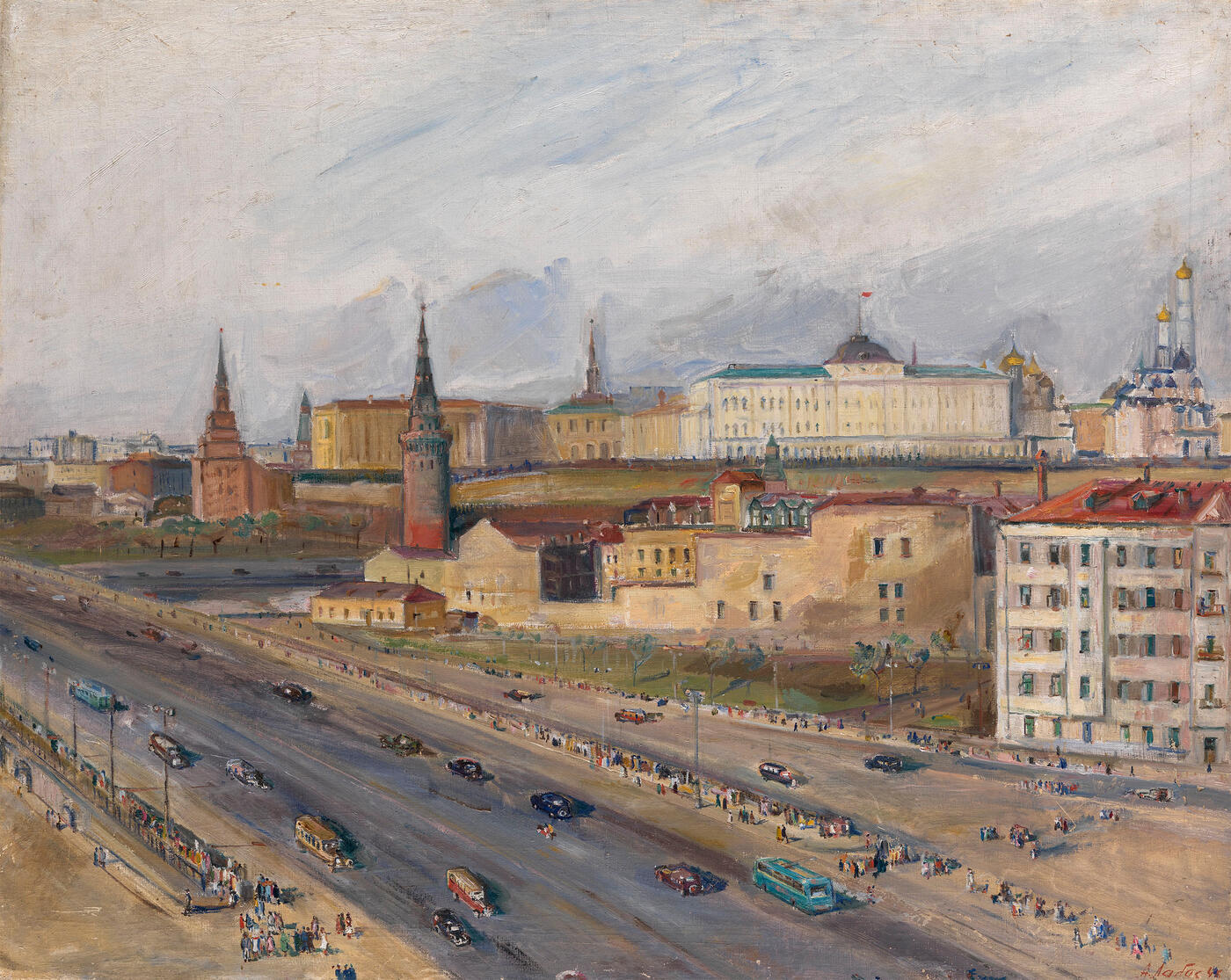25 - 28 November 2012 Russian Art Auctions
25 November 2012

39. LABAS, ALEXANDER (1900–1983)
View of the Kremlin from a Window, signed and dated 1946, further titled, inscribed in Cyrillic “seriya Moskva” and dated on the reverse.
Oil on canvas, 77 by 97 cm.
180,000–250,000 GBP
Provenance: Private collection, UK.
With its underlying themes of industrialisation and technological progress, View of the Kremlin from a Window adheres to the aims of the Society of Easel Painters, of which Alexander Labas was a member, but it is also very much a product of a specific time and place in Russian history and culture.
This work was painted in 1946 in the aftermath of the war, but the dark palette and fear and anxiety with which his works of the war-period are shot through has lifted. The wonderful harmonies of pastel tones in View of the Kremlin from a Window and other scenes of Moscow of this period fill these works with a sense of joy in the everyday and relief. The artist’s characteristic use of colour also lends the composition a lyricism and touch of whimsy common to all his oeuvre.
The world Labas has recorded for posterity was undergoing a series of exciting changes and advances and he often used an unusual or elevated perspective from which to view them: whether looking down at the world from an aircraft, In Flight (1935), or from a top-storey window, as in the present lot, or indeed looking up from the foot of an escalator, Metro (1935).
In View of the Kremlin from a Window the elevated viewpoint creates a wide panorama view of the city below and all the contrasts it throws up. Movement, which Labas endlessly sought to fix on paper, comes from the bustling people and traffic on a busy road, but it is contrasted with the sense of stillness and permanence present in the Kremlin and surrounding buildings. The juxtaposition between the old and new, the permanent and the fleeting, the architecture and people, reflects the physical division of the canvas into two parts by the diagonal line of the pavement. A sense of history as well as modernity is present as Moscow emerges from the war intact.
This sense of whimsy, the dramatic perspectives and use of colour as a means of expressing space, are what lend Labas’ work a particularly decorative air which can at first belie the more serious undercurrent of social commentary which runs through them, but it is also what makes them unmistakeable and inimitable.
Notes on symbols:
* Indicates 5% Import Duty Charge applies.
Ω Indicates 20% Import Duty Charge applies.
§ Indicates Artist's Resale Right applies.
† Indicates Standard VAT scheme applies, and the rate of 20% VAT will be charged on both hammer price and premium.